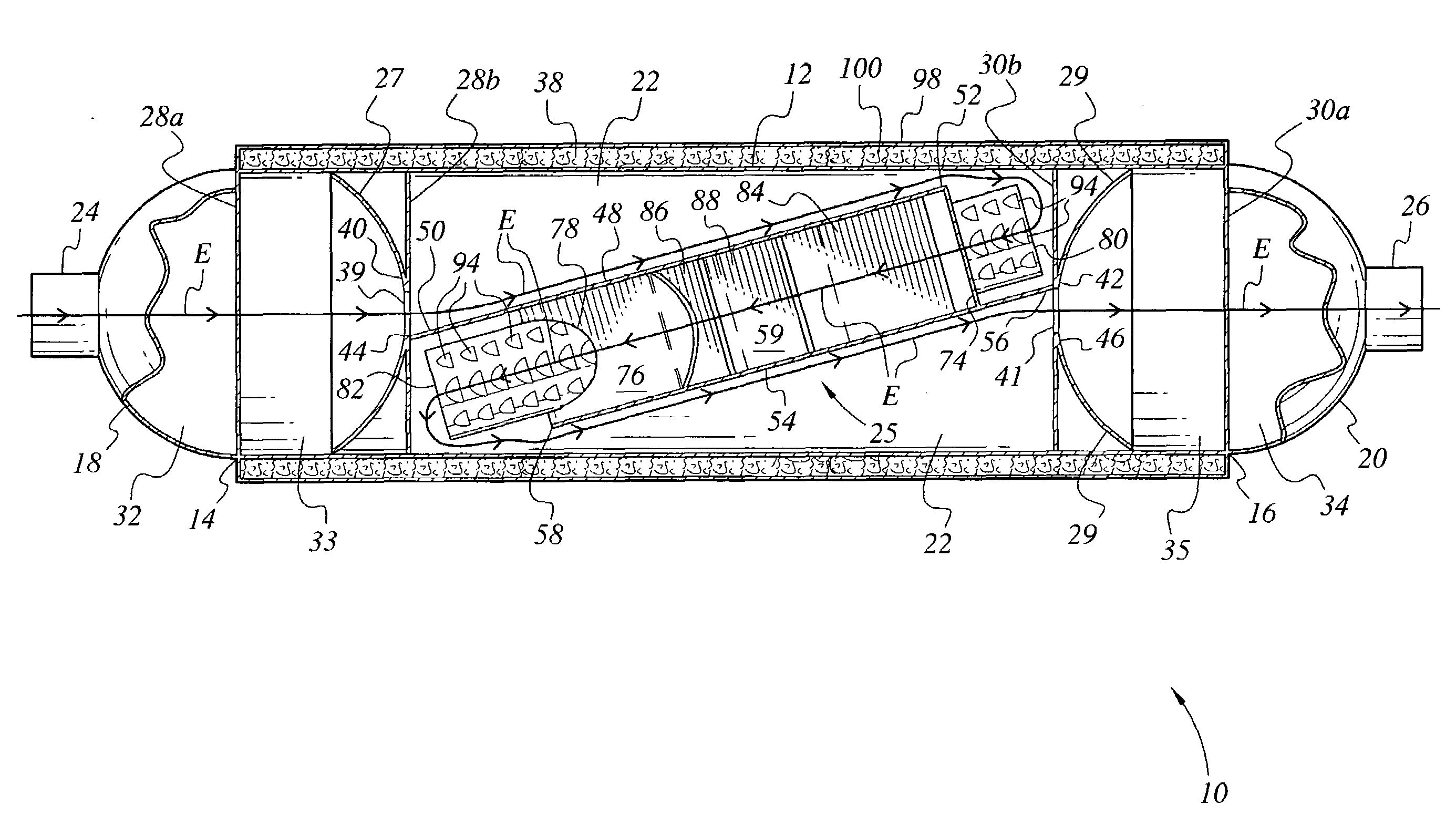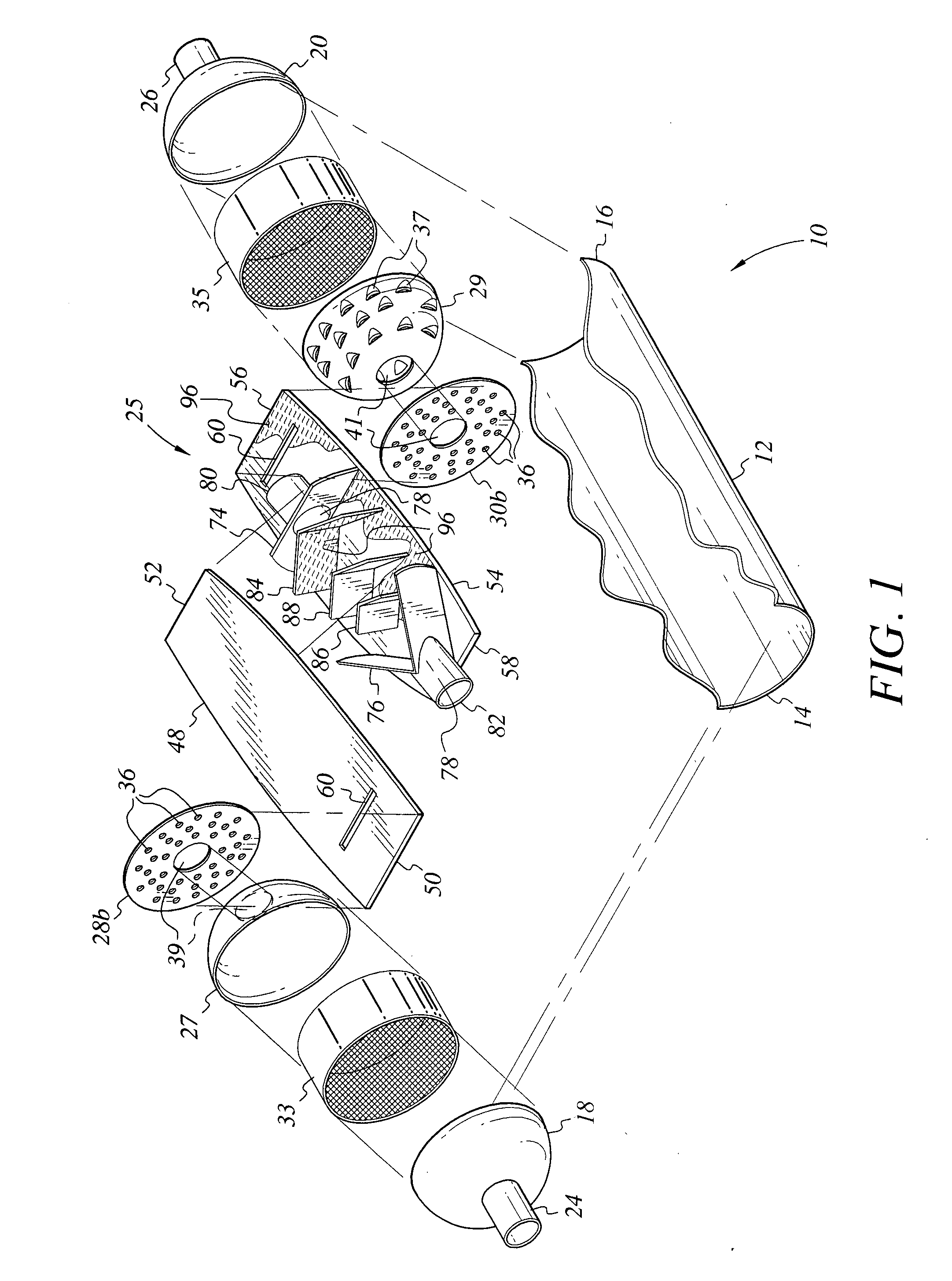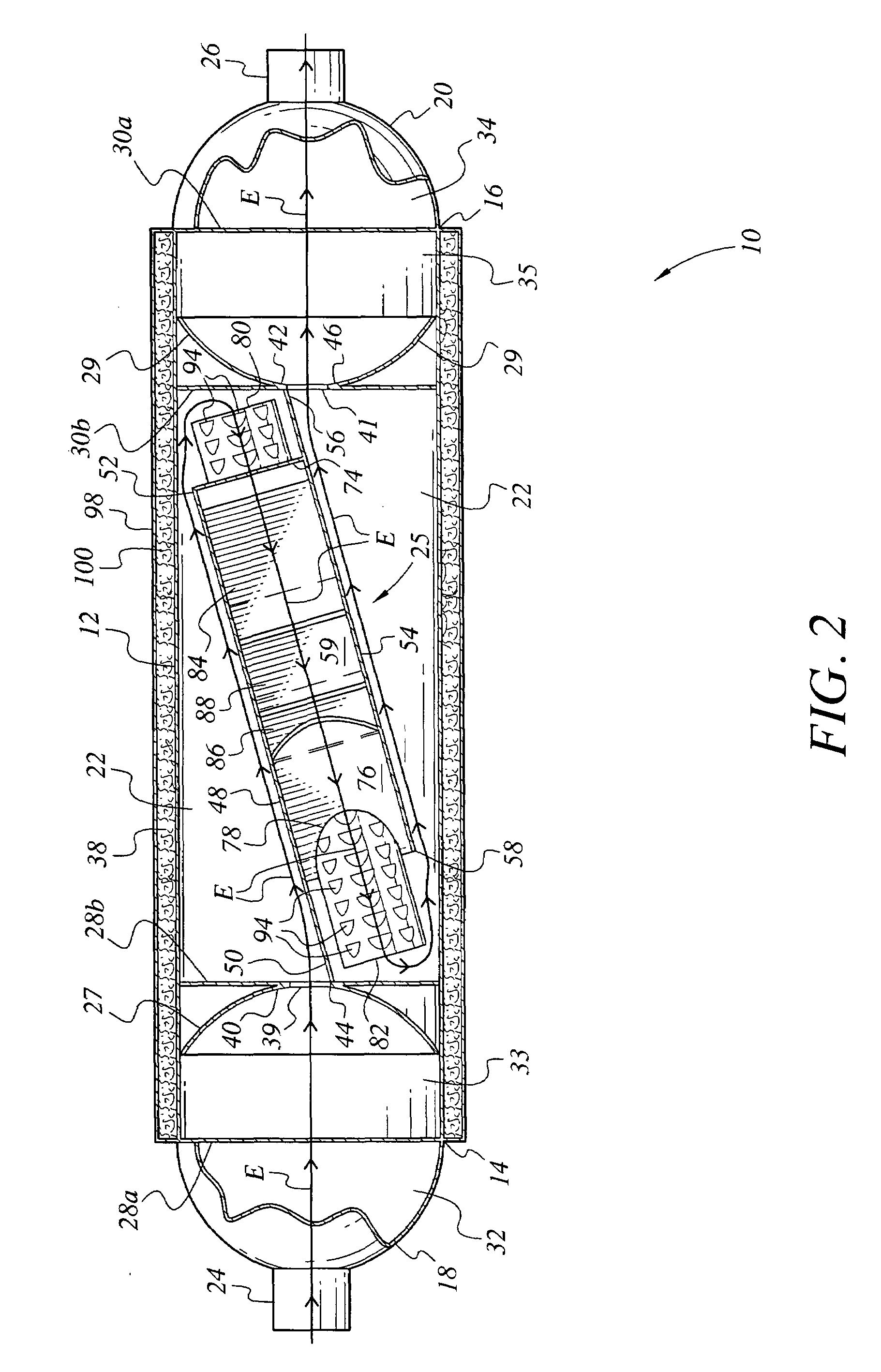Exhaust sound and emission control systems
a technology of exhaust sound and emission control, applied in the direction of engines, machines/engines, mechanical equipment, etc., can solve the problems of aluminized coating burning off, generally not being combined into a single unit, adversely affecting the environment, etc., and achieve the effect of enhancing emissions reduction and reducing exhaust components
- Summary
- Abstract
- Description
- Claims
- Application Information
AI Technical Summary
Benefits of technology
Problems solved by technology
Method used
Image
Examples
embodiment 110
[0062]FIGS. 3 and 4 respectively provide an exploded perspective view and a side elevation view in section of another embodiment 110 of the present exhaust sound and emission control system invention. Like components between the system 10 of FIGS. 1 and 2 and the embodiment 110 of FIGS. 3 and 4 are indicated with identical reference numerals, with only those components that are different between the two embodiments being indicated by different reference numerals.
[0063]The exhaust emission and control system device 110 of FIGS. 3 and 4 comprises a generally cylindrical unit. The internal components of the exhaust system 110 are enclosed in an elongate external housing or shell 12 (shown with one side broken away in FIG. 3, for clarity in the drawing Fig.) having an inlet end 14 and opposite outlet end 16. Each end 14 and 16 of the housing 12 has an external end plate sealed thereto, respectively inlet end plate 18 and outlet end plate 20. These external end plates 18 and 20 may compr...
embodiment 10
[0080]It will be seen that the present exhaust sound and emission control system 110 may also incorporate such catalytic converter elements, e.g., elements 33 and 35, as shown in the embodiment 10 of FIGS. 1 and 2 and described further above. In addition, the present system 110 may also incorporate internal coatings 96 of emission reduction material therein if so desired, as shown in FIG. 3, e.g., platinum, rhodium, palladium, etc.
[0081]The relatively free flow characteristics of the present exhaust system result in a relatively small percentage of the exhaust gases actually contacting the internal surfaces of the device 110 (with the exception of the catalytic converter elements 33 and 35, if incorporated therewith). However, coating the internal surfaces with a catalytic conversion coating 96 as shown in FIG. 3, e.g., the internal surface of the housing 12, the separator panels 48 and 54, the entry, exit, and intermediate baffles or vanes 84 through 88, etc., nevertheless does pro...
embodiment 210
[0085]Moreover, an upstream and a downstream divider vane, respectively 212 and 214, are installed through the respective entry and exit pipes or tubes 80 and 82 in the embodiment 210 of FIGS. 5 and 6. These divider vanes 212 and 214 have lengths approximately equal to their respective tubes 80 and 82, and serve to smooth and separate the exhaust gas flow relative to the two sides of the series of chevron shaped baffles or guides 76, 86, and 88. Accordingly, the upstream divider vane 212 may extend between the two sides of the separate guide components 84a and 84b to the secondary intermediate baffle or guide 88, to preclude turbulent flow due to gases passing from one side of the assembly to the other.
[0086]FIGS. 7 through 9 respectively provide an exploded perspective view, a side elevation view in section, and a lateral view in section through line 9-9 of FIG. 8, of yet another embodiment 310 of the present exhaust sound and emission control system invention. Like components betw...
PUM
 Login to View More
Login to View More Abstract
Description
Claims
Application Information
 Login to View More
Login to View More - R&D
- Intellectual Property
- Life Sciences
- Materials
- Tech Scout
- Unparalleled Data Quality
- Higher Quality Content
- 60% Fewer Hallucinations
Browse by: Latest US Patents, China's latest patents, Technical Efficacy Thesaurus, Application Domain, Technology Topic, Popular Technical Reports.
© 2025 PatSnap. All rights reserved.Legal|Privacy policy|Modern Slavery Act Transparency Statement|Sitemap|About US| Contact US: help@patsnap.com



